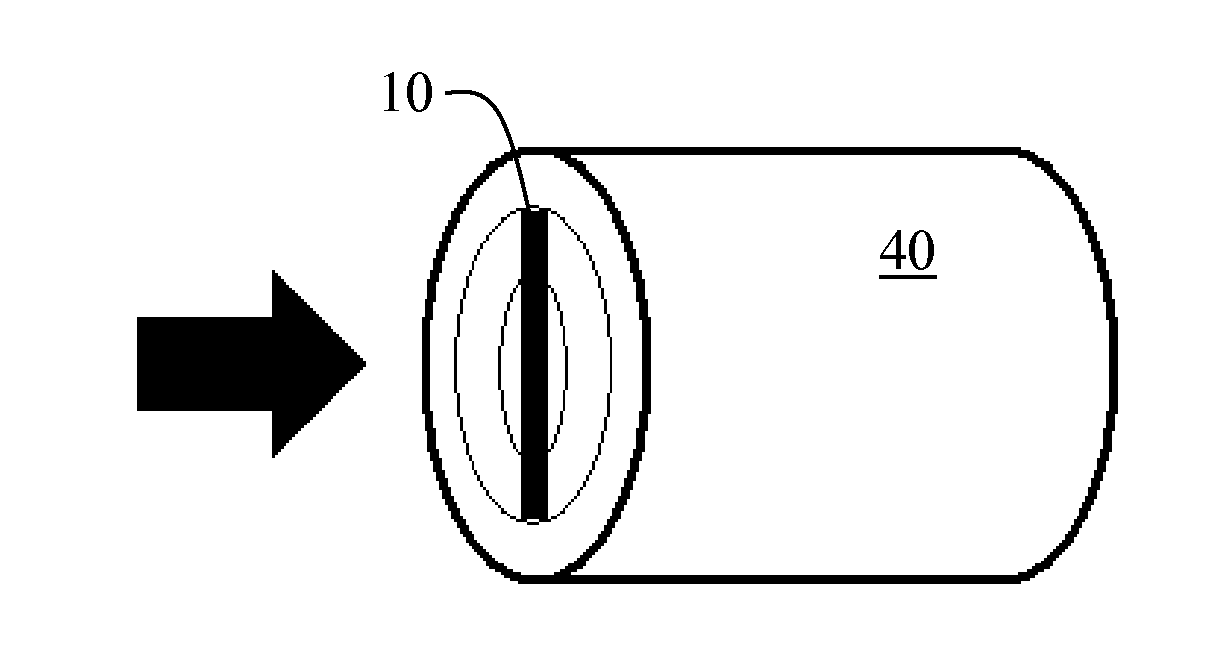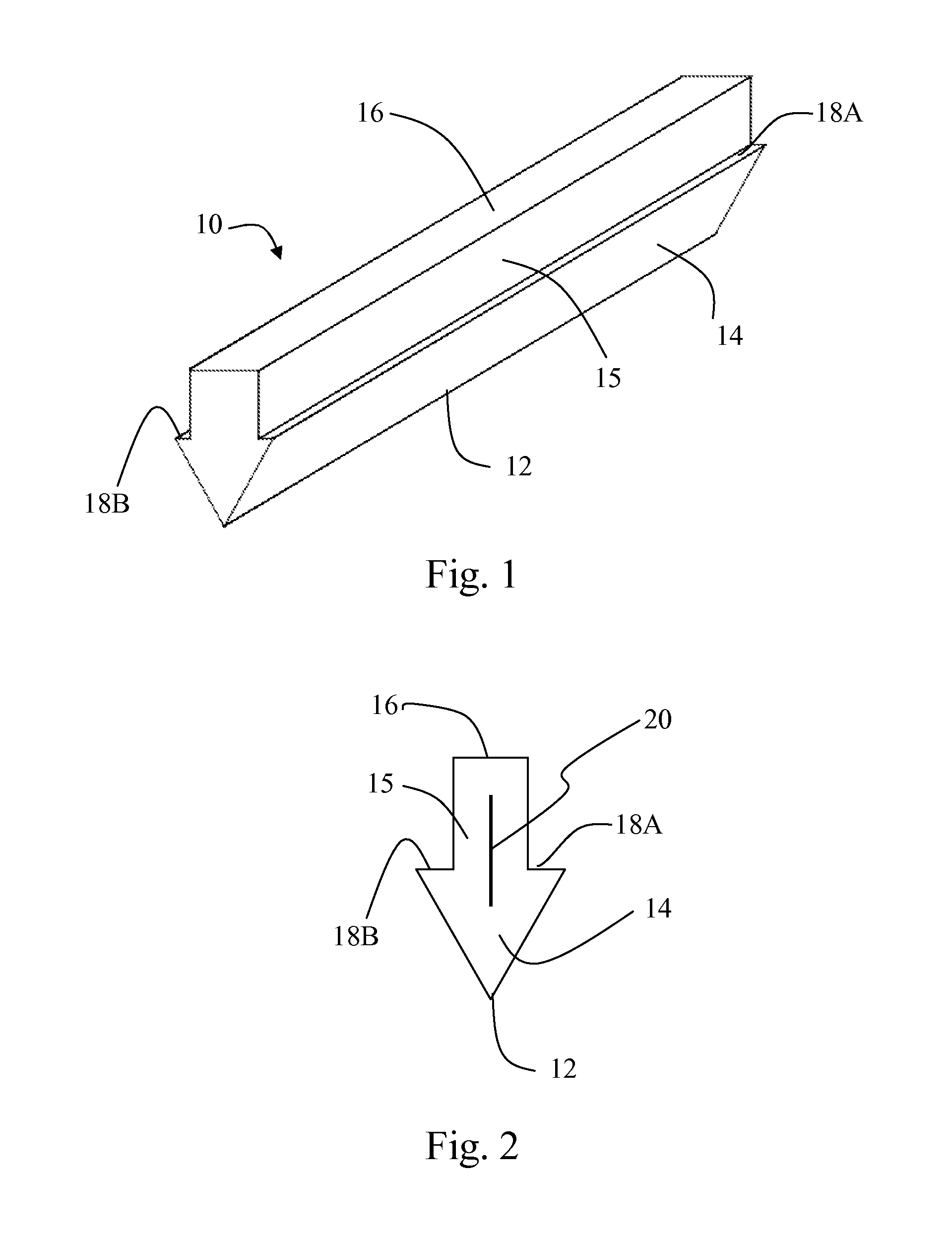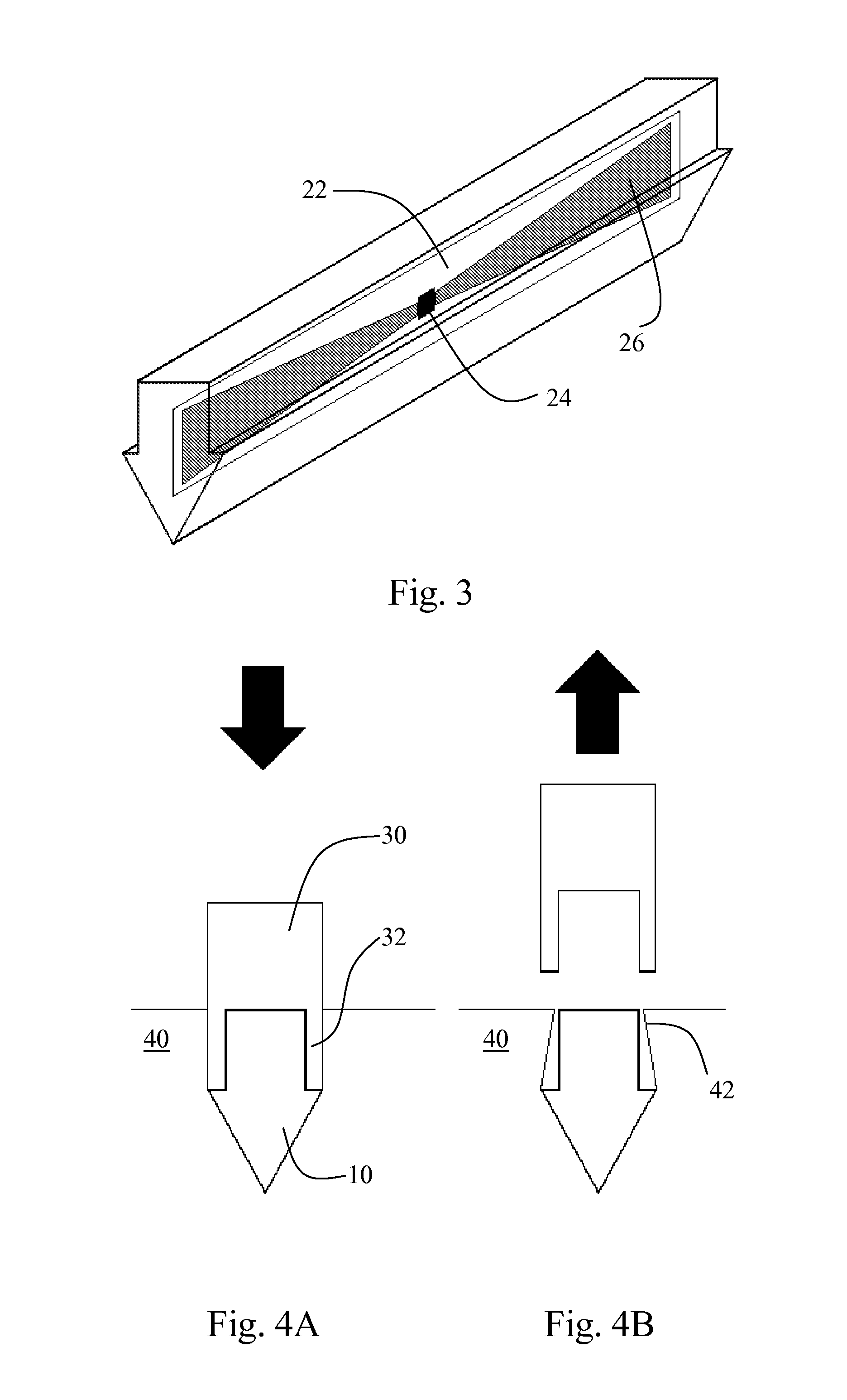Transponder, transponder kit, method of applying the transponder and product comprising the transponder
a technology of transponder and kit, which is applied in the field of transponder, transponder kit, method of applying the transponder and product comprising the transponder, can solve the problems of increasing the complexity of the marking process, requiring expensive special tools, and undesirable additional machining steps
- Summary
- Abstract
- Description
- Claims
- Application Information
AI Technical Summary
Benefits of technology
Problems solved by technology
Method used
Image
Examples
Embodiment Construction
[0033]FIG. 1 shows a transponder 10 according to one embodiment of the invention. The transponder 10 is elongated in one direction and comprises a wedge-shaped first edge 12 on a longitudinal side thereof, the first edge 12 being adapted to penetrate to wood foremost. An elongated wedge-shaped first portion 14 extends from the first edge 12, serving to displace wood while the first edge 12 penetrates into the wood. The transponder further comprises a second portion 15, which extends from the broadest point of the wedge-shaped first portion 14 away from the first edge 12 and forms the second edge 16 of the transponder.
[0034]According to the embodiment shown in FIG. 1, the wedge-shaped first portion 14 has a maximum width in the lateral direction, which is greater than the maximum width of the second portion 15. In other words, there are formed two shoulders 18A, 18B extending in the lateral direction of the transponder at the region between the wedge-shaped first portion 14 and the s...
PUM
| Property | Measurement | Unit |
|---|---|---|
| Angle | aaaaa | aaaaa |
| Angle | aaaaa | aaaaa |
| Current | aaaaa | aaaaa |
Abstract
Description
Claims
Application Information
 Login to View More
Login to View More - R&D
- Intellectual Property
- Life Sciences
- Materials
- Tech Scout
- Unparalleled Data Quality
- Higher Quality Content
- 60% Fewer Hallucinations
Browse by: Latest US Patents, China's latest patents, Technical Efficacy Thesaurus, Application Domain, Technology Topic, Popular Technical Reports.
© 2025 PatSnap. All rights reserved.Legal|Privacy policy|Modern Slavery Act Transparency Statement|Sitemap|About US| Contact US: help@patsnap.com



